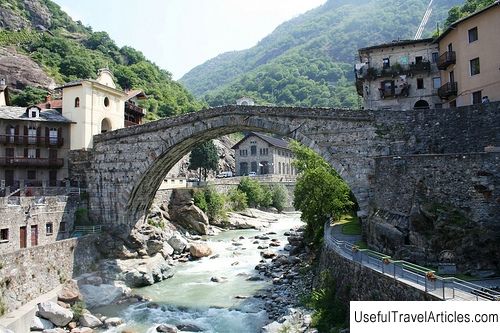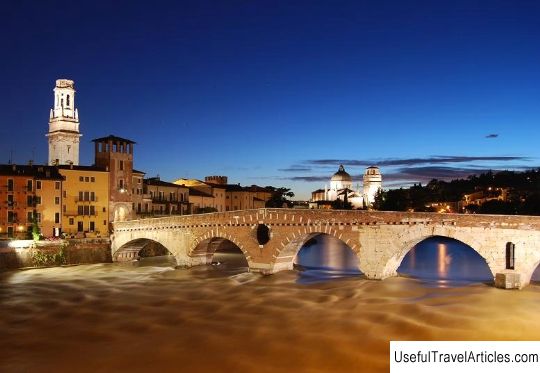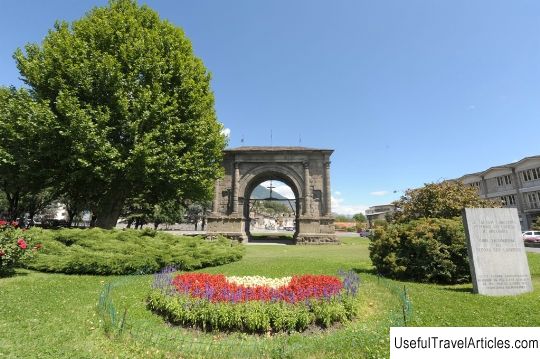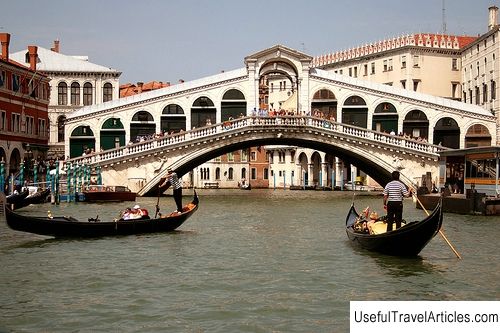Ponte di Pietra bridge description and photos - Italy: Aosta
Rating: 7,5/10 (589 votes) Ponte di Pietra bridge description and photos - Italy: Aosta. Detailed information about the attraction. Description, photographs and a map showing the nearest significant objects. The title in English is Ponte di Pietra. Photo and descriptionThe Ponte di Pietra bridge, whose name can be translated as "stone bridge", is an ancient Roman arch bridge in the town of Aosta in the Val d'Aosta region of Italy. The bridge spanned the River Buttier, about 600 meters from the eastern entrance to the Roman colony of Augusta Pretoria, the predecessor of Aosta, and 150 meters east of the Arch of Augustus. The Ponte di Pietra span is 17.1 meters long and 5.9 meters wide. The arched vault is lined with huge wedge-shaped bricks, and the cladding is made of Swiss sandstone. The bridge dates from the second half of the reign of Emperor Augustus (30 BC - 14 AD), who, in fact, founded the military colony of August Pretoria at a strategically important crossroads. Ponte di Pietra was also of strategic importance, because it was in Aosta that the transalpine road to Gaul branched out into the Small and Big Saint Bernard passes. And in the southeast direction - towards the valley of the Po river - the road passed through another arched bridge - the perfectly preserved Ponte San Martino, located at the exit from the Aosta valley. This bridge was also built in the 1st century BC. and is about 32 meters long. In the Middle Ages, as a result of severe flooding, the Boutier water flow changed its direction to the west. Under the Ponte di Pietra bridge, only a small stream remained, which eventually dried up completely. The bridge lost its significance and gradually began to be covered with earth. Only in our time has it been brought back to light. There is another well-preserved ancient Roman bridge in Val d'Aosta - the Pont d'Aeul, located in the town of the same name. This bridge was built in the 3rd century BC. and was used to supply the military colony of Augusta Pretoria with water for agricultural purposes. It was part of an elaborate 6-kilometer aqueduct that traversed the sheer cliffs of the valley. Today a walking route runs along it.       We also recommend reading Cathedral of St. Mark (Catedral de San Marcos de Arica) description and photos - Chile: Arica Topic: Ponte di Pietra bridge description and photos - Italy: Aosta. |





